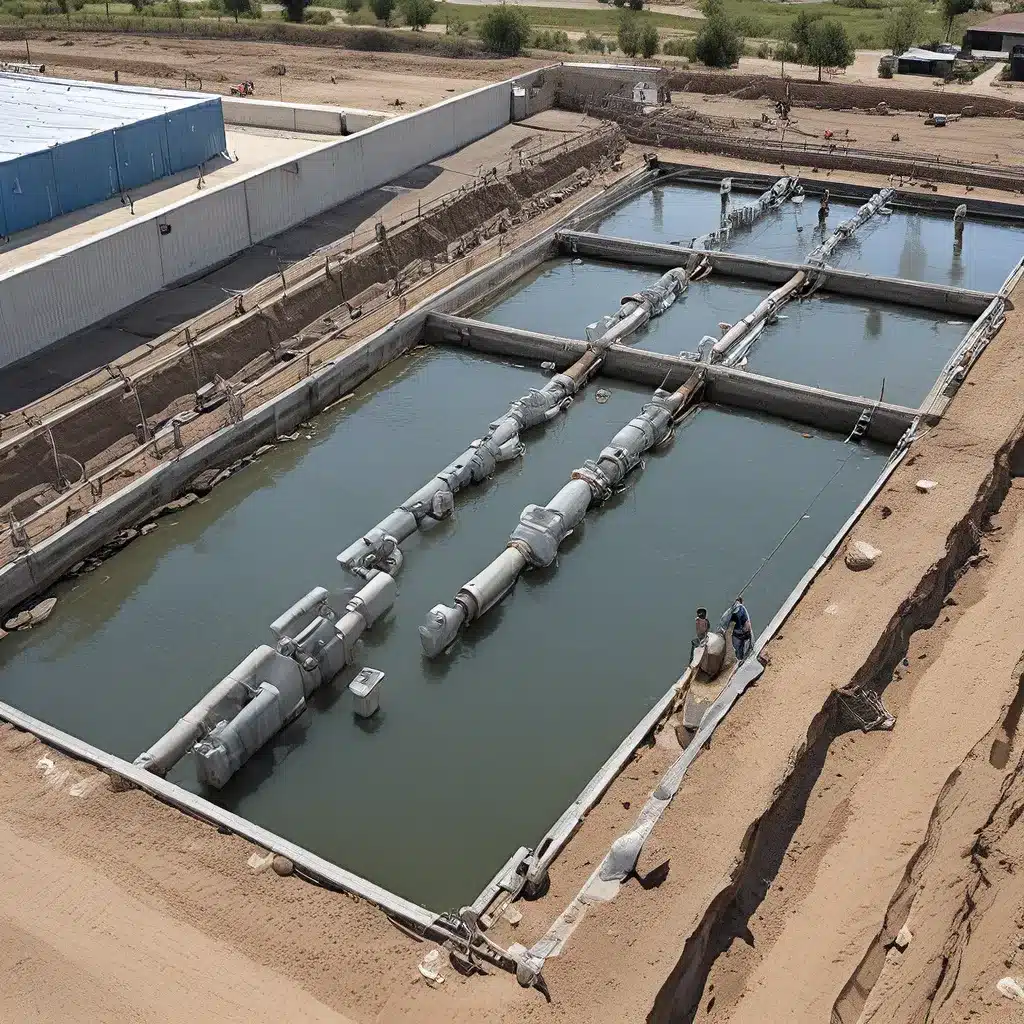
In the ever-changing landscape of environmental challenges, the symbiotic relationship between water treatment and emergency response has become increasingly vital. As a resident of the region, I’ve witnessed firsthand the ebb and flow of these interconnected currents, where collaboration is the key to navigating the rapids of natural disasters and public health emergencies.
Weathering the Storm: Water Treatment and Flood Preparedness
Valley Water, the local water district, has spearheaded an ambitious project to strengthen the region’s resilience in the face of flooding. This initiative empowers Valley Water to work closely with municipalities, clearly delineating roles and responsibilities for floodplain management and flood emergency response.
The resulting plans not only bolster the area’s flood preparedness but also enhance the overall capacity for mutual assistance during other crises, from public health emergencies to natural disasters. As the project coordinator, Alexander Gordon, explains, “This project supports Valley Water’s countywide emergency response preparedness and mitigation activities, developing communication processes and disseminating web-based flood forecasting information.”
Interestingly, this collaborative effort is rooted in the region’s history of voter-approved funding for water-related initiatives. In 2020, the renewal of the Safe Clean Water and Natural Flood Protection Program demonstrated the community’s unwavering commitment to safeguarding its water resources and enhancing emergency preparedness.
Upstream and Downstream: Coordinating Disaster Response
The water treatment and environmental services industry has long recognized the importance of collaboration in disaster response. Montana Disaster and Emergency Services (MT DES), for example, has been a shining example of this synergy, serving as the lead agency for coordinating comprehensive emergency management in the state.
As Delila Bruno, the Administrator of the Disaster and Emergency Services Division, explains, “Engaging the whole-community results in robust planning intended to minimize the impact to our populations affected by disasters.” This holistic approach involves forging strong partnerships with local and tribal governments, as well as public, private, and non-profit entities.
The significance of these collaborative efforts becomes especially apparent during crises. Whether it’s battling wildfires, responding to severe storms, or mitigating the effects of a pandemic, the ability to coordinate and share resources can mean the difference between a successful recovery and a prolonged struggle.
Weathering the Storm: Water Treatment and Flood Preparedness
One of the most critical aspects of this collaborative approach is the emphasis on disaster mitigation and preparedness. As Delila Bruno notes, “She is an avid supporter of comprehensive emergency management with an emphasis on disaster mitigation.” This focus on prevention and proactive planning is echoed in the efforts of Valley Water’s emergency response planning and preparedness project.
By coordinating with local municipalities to merge flood emergency processes, Valley Water aims to strengthen the region’s resilience. This includes developing formal site-specific flood-fighting strategies, conducting annual drills and exercises, and ensuring the effectiveness of the plans through regular testing.
The benefits of this collaborative approach are manifold. As Gordon explains, “The resulting plans will also strengthen response capabilities for mutual assistance during other types of public health and safety emergencies or natural disasters.” In other words, the groundwork laid for flood preparedness has the potential to pay dividends across a wide spectrum of disaster scenarios.
Bridging the Divide: Water Treatment and Public Health Emergencies
The intersection of water treatment and emergency response extends beyond natural disasters, as evidenced by the critical role these industries played during the COVID-19 pandemic. When the world was grappling with the unprecedented challenges of a global health crisis, the water treatment and environmental services sectors stepped up to the plate.
FEMA’s Comprehensive Preparedness Guide highlights the importance of integrating public health considerations into emergency management planning. This holistic approach recognizes the vital role that water treatment plays in safeguarding public health, particularly during times of crisis.
From ensuring the continued operation of water treatment facilities to implementing robust safety protocols, the collaboration between water treatment professionals and emergency responders has been instrumental in maintaining the integrity of our water systems. As the pandemic has shown, the ability to adapt and work together in the face of evolving threats is a hallmark of a resilient and responsive industry.
Navigating the Currents: The Future of Water Treatment and Emergency Response
As we look to the future, the currents of collaboration between water treatment and emergency response are only expected to grow stronger. The increasing frequency and intensity of natural disasters, coupled with the looming specter of public health emergencies, underscore the need for a unified and proactive approach.
Initiatives like Valley Water’s emergency response planning and preparedness project and the collaborative efforts of organizations like MT DES serve as beacons of hope, guiding us towards a future where water treatment and emergency response work in seamless harmony.
By embracing a culture of interdependence and shared responsibility, the water treatment and environmental services industries can continue to navigate the treacherous waters of crisis, emerging stronger and more resilient than ever before. And as a resident of this community, I take great comfort in knowing that these vital currents are in capable hands, ready to weather any storm that may come our way.


